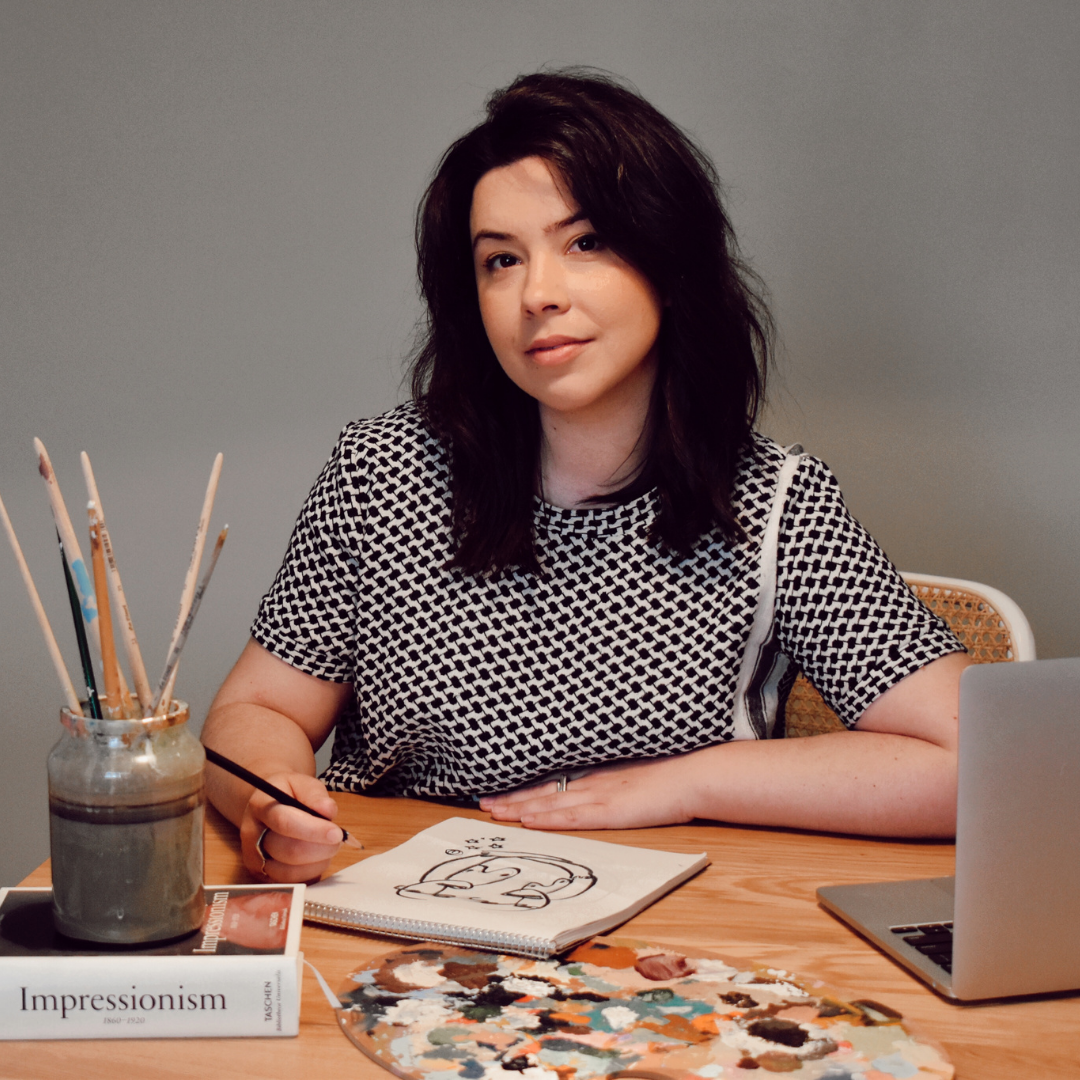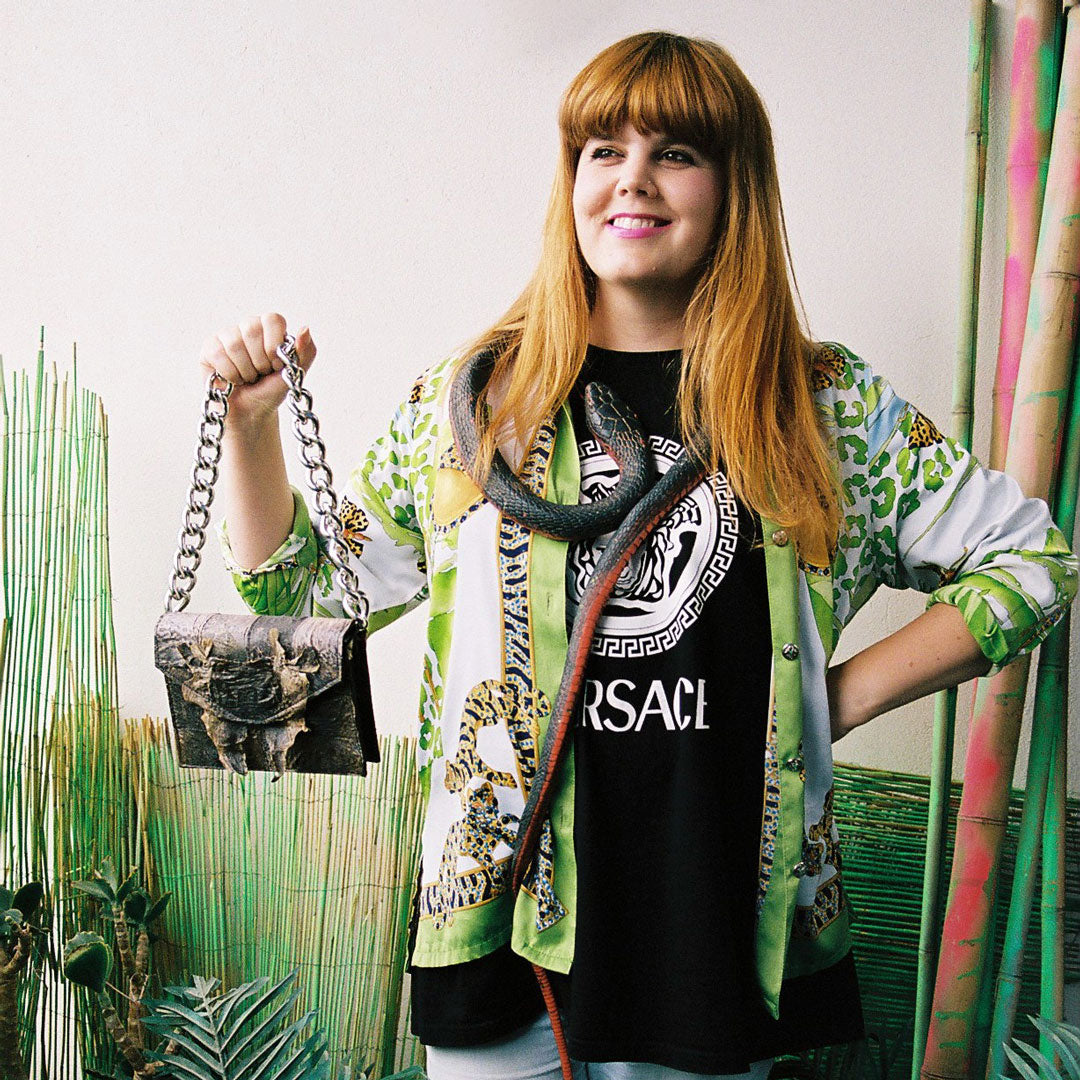how can we all create a circular economy?
As a brand, we have built our ethos on working in harmony with the people and places that we come across. Minimising our impact on the planet is critical in our attempt to create timeless wares that balance design with our impact.
As citizens who exist in this modern world, not creating isn't an option. Instead, we can look to models of operation that enable us to be inspired by and harmoniously work with our environment.
PHD student and dear friend of simétrie, Julia English, shares her understandings and findings on how the Circular Economy could be one solution to our hyper-consumerist world without having to go completely off the grid, Bear Grylls style.
Guest blog by Julia English, PHD student at RMIT University
![Julia English [photo: RMIT]](https://cdn.shopify.com/s/files/1/0134/1862/7136/files/Julia_English_fashion3_2048x2048.jpg?v=1605226927)
Julia English, Photo: RMIT
“[A circular economy is] restorative and regenerative by design and provides benefits for business, society and the environment.”
- Ellen MacArthur Foundation
what is the circular economy?
The circular economy is an economic concept that can be applied to any industry and brings together lots of different ideas with the goal of shifting our economy from a linear [take-make-dispose] to circular model [where nothing is waste].
It draws on ideas around learning from nature [to solve human challenges], creating systems where waste is food [Cradle to Cradle] and promoting sharing and service based business models [performance economy & the sharing economy].
These ideas aren’t new, in fact they have their roots in First Nation's practices, and we want to acknowledge that while the term is new, First Nations cultures across the world have always practiced this through their care for the world and their preservation of resources [Korina Emmerich talks about the importance of global First Nation's practices here]. A circular economy is about putting all these ideas together so that our people and planet can live healthily for generations to come. The idea is quite broad, so it is important to talk about how we can do this in practice, both as a brand, but also as individuals.
The Ellen MacArthur Foundation uses three core principles to help break this down– keep using, design out waste and regenerate. Circularity will look different in different places as we are all unique, with individual needs and varying local systems, so let’s talk about what circularity looks like for us at simétrie.

keep using
We need to keep using things, firstly by giving them long lives [reuse, resale, sharing, swapping, rental etc], then by keeping them looking great [repair, refurbish], and even by modifying them [alterations, remaking, remanufacturing], until they worn out. Designers can help us keep using things through design concepts like personalisation, modularity, adjustability, repairability, amongst others. This helps create products which we can emotionally connect to, or use in many different ways, all to help us get the most out of them.
We also love this principle as it asks YOU to be a part of the circular economy, as you are the person who can use your products for longer, share them, care for them well and dispose of them responsibly.
how we are doing this:
-
A classic style – we aren’t trend driven, preferring to create bags which will be timeless in their appeal
-
Leather that gets better with age – one of the reasons we use vegetable tanned leather is that it wears beautifully and gets better with time
-
Personalisation – we offer personalisation to help you feel more emotionally connected to your bag and want to keep using it for longer
-
DIY kits and workshops – in creating your own bag you value the time and love that has gone into it
-
Lifetime repairs – we know things happen, so we offer repairs on Simétrie items so you can keep loving and using your bag for a long time to come

Simétrie lifetime repairs
regenerate
This is all about regenerating our world, this is largely to do with how we source materials and choosing options which make our planet healthier. We choose vegetable tanned kangaroo leather [see our earlier post about it here] and hemp, organic cotton or linen fabrics for non-leather collections.

Flax seed crop, the plant where linen comes from
Linen and hemp naturally use low water and pesticide, and organic means that there are no pesticides used in growing the cotton [check out these Instagram posts for more about linen, hemp and organic cotton]. If you want to know more about regenerative practices, we suggest you watch Kiss the Ground, available on Netflix in Australia currently, as it explains how regenerative agricultural practices can save our soils and actually save our planet.
design out waste
The design out waste methodology suggests that waste shouldn’t be a word in our vocabulary. Everything that is currently called ‘waste’ should be regarded as food for something else. This means that at the end of their lives, all products should be able to become something else – infinitely.
Cradle to Cradle is a concept in which the Circular Economy draws on for products [find out more about Cradle to Cradle here] and helps identify two key ways of doing this, the biological cycle [return to nature] and the technical cycle [recycle].
Recycling leather is still in its infancy [RecycLeather™ is one early stage innovator] and we know it probably won’t be available in Australia for a while to come, as well as the fact that we don’t have well developed collection and sorting system in place. So, while we hope that your simétrie bags last that long, we want to have a back-up plan, so that your bag never has to go into landfill. That is where the biological cycle comes in.
can a simétrie bag be safely returned to nature?
In theory, they should, as they are vegetable tanned leather, but we are testing to make sure! We have removed the metal trims from one of our XS Crescent Moon bags, and buried it in some soil, and plan to dig it up at three-month intervals and document how it breaks down. We are also burying some scraps of leather, to see if this is an option for us to safely dispose of tiny scraps that can’t be reused.

our notes:
-
As we use compost to grow foods, we need to be extra careful about what we put in it, and as we won’t know what leather products you might have treated the bag with, we are choosing to simply bury it in the soil and document how it breaks down.
-
At this stage, there isn’t enough research yet on what nutrients textiles and leather goods can actually add back into the soil, so being able to bury them is a strategy to avoid them ending up in landfill rather than beneficial in itself.
-
Our bags do have metal trims, these don’t break down, and need to be removed [they would need to be removed for recycling too] – this is an area we prioritise functionality and durability instead of what will happen at their end of life.
are there standards for circularity?
Circularity is a concept that can include different things, so measuring it is hard, particularly considering how things can cycle through our systems is dependent on place, so something that could easily be recycled in Sweden might not be able have the facilities in Australia. This means that while there are product certifications like Global Recycling Standard, Hohenstein Institute [biodegradation measurement] and Cradle to Cradle Certified™ they mainly cover the product, and don’t always clearly communicate the exact circumstances in which products can be recycled or biodegrade, or what systems have to be in place to enable circularity.
Sadly, in Australia, we don’t have well established circular systems yet, and as a small brand we can’t fund innovation. However, we want to find a safe end-of-life for our products, which is why we are doing this burial test.
what you can do now:
-
Go give your bags some love! This is your reminder to give your leather goods a clean up, if you have a natural option [like this] use it instead of chemical ones.
-
Keep using what you have! Take a close look at all the things in the back of your wardrobe, and see if there are any gems you’ve forgotten about. If they need some repairs, get them fixed up.
-
Not going to use something again? Think about being part of the circular economy yourself, through sharing them with friends, or reselling on platforms like Goodbyes, Mutual Muse, Vestiaire or even Facebook Marketplace.
-
Got something that you’ve used to death and can’t pass on? If it’s a simétrie bag, let us know and we will take it back. If it’s something else, can you turn it into something new, like a plant holder or coaster? Pinterest is always good if you’re stuck for ideas. Otherwise, consider skipping donations as it costs charities to dispose of unsaleable goods, and instead use Upparel service, or take it to H&M but remember that it will still be people sorting them, so make sure it is clean.
The Circular Economy includes lots of ideas, so when you see brands talking about circularity, ask what they mean by it. Remember, the most sustainable and circular options are already sitting in your wardrobe, and the second best option is second hand.
Shop our collections here.



Comments
Jenna —
Great post Julia and Simone! Thank you for mentioning Mutual Muse :D
xx